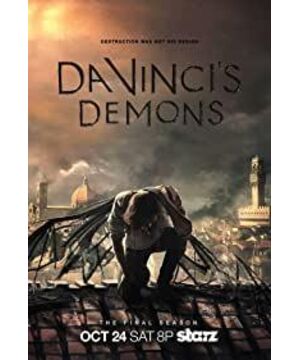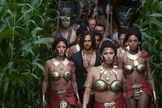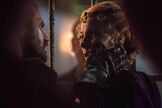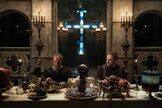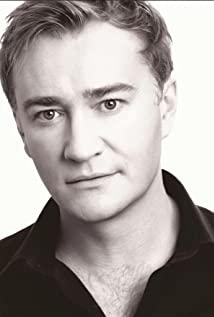The background of the whole series is set in the golden age of the Renaissance, which is the period when Leonardo was active. Of course, the historical materials about Leonardo himself are confusing, if you look at it in the attitude of "ancient history" , I am afraid that Leonardo’s life has basically no history. However, this also happens to give Goyer a huge room for development. Da Vinci has long been a source of inspiration for countless legends in Western popular culture, such as novels and movies such as "The Hudson's Eagle" and "The Da Vinci Code". They are all squeezing the "surplus value" of the name "Da Vinci", and the video game "Assassin's Creed 2", which was placed in the Renaissance world view, directly returned to the era of Da Vinci and achieved great success. . These popular cultural products are more or less talking about Da Vinci, but they did not directly use Da Vinci as the protagonist. There is always a sense of itchiness. This time, Da Vinci’s "self" enters the room directly. It conforms to the logic of the evolution of popular culture.
The background of the drama is the struggle between the Holy See in the Vatican and the Republic of Florence. At that time, Pope Sixtus IV coveted Florence for a long time and tried his best to subvert the rule of the Medici family in Florence, and then grab the wealth of Florence. And power. As a city republic, Florence's military strength was not strong at the time, but under the Medici family, the economy and culture of the city were prosperous, and it was also the core town of the Renaissance-the ruler at the time was Lorenzo • Medici, known as the "Great Medici" in history, is good at doing business and advocating a luxurious and flashy life. At the same time, he is also a sponsor of many artists-in the series, Leonardo became Lorenzo Mei Diqi’s guest, but from historical data, Michelangelo and Lorenzo Medici may have a closer relationship, but in the first season of "Da Vinci’s Devil", Michelangelo clearly I was ignored (but there is a plot to pay tribute to "Decameron").
Da Vinci in the series is a scientist, engineer, painter, mentally ill patient, illegitimate child, cheating man, and sodomy (of course the crime is framed, but judging from the kiss between him and the man after the interrogation, the same-sex orientation It is not groundless.) Leonardo was employed by Lorenzo Medici and invented high-tech devices such as machine guns, diving suits, sonar bombs (with the help of bats), mechanical flying birds, sky projectors, etc., breaking the nerves The toxin-induced homicide, bravely rushed to the castle of the vampire Count Dracula, and used a huge fake ballista to scare away the Vatican invaders. In short, with the help of two loyal buddies, Da Finn Qi was born into death, wise and brave, and almost used his own strength to defend the independence of the Republic of Florence.
The entire "Da Vinci's Devil" is a mystery of "materialism". No matter how weird it is at the beginning, it will be dismantled by Leonardo in the end. There is always a "scientific" explanation. It should be said that "Da Vinci's Devil" can be regarded as a panoramic historical drama. The level of "international politics" is incompatible with the Florence Republic and the Vatican Papal State. Within the Florence Republic, there are also the Pacchi family and the Medici family. Erhu, and on the clue of Leonardo da Vinci, apart from being involved in the life-and-death political struggle, he has also been struggling to pursue the mystery of his own life experience-Leonardo’s father was a deep confidant of the Republic of Florence. A public notary, but his mother's figure is full of fog. The drama portrays him as an illegitimate child, always looking for the truth about his mother - at this time, the content of the pagan "son of Mithra" has also become pervasive. Ji’s suspenseful clue: Mithra faith is derived from the ancient Aryan religion. It was popular during the Roman Empire and was very popular among Roman soldiers, and even became an important opponent of Christianity. However, Mithraism declined rapidly thereafter. In the Renaissance period, there was basically no impact, but it also made it seem mysterious. Since there is no historical burden, Goyer can use it with ease, and boldly make up some "Book of Leaves". Things like this have become a hidden classic of Mithraism (I suspect that this is a copy of the "Bayeux" idea)... And Lorenzo Medici's grandfather Cosimo Medici also in the play Described as an important member of the "Son of Mithra", it is worth mentioning that Cosimo Medici does have his own personality. He is known as the "richest man in Europe" and was awarded the "Father of the Country" by the Republic of Florence. "The title. In the play, Leonardo discovered the clues of Mithraism from a portrait of Cosimo. Leonardo was more godly than Holmes. He could easily reveal the hidden clues of the dark room and secret path. He even dived directly into the Pope’s bathroom, went to the Vatican’s secret underground warehouse with the Pope, and saw the bones of the "dragon" (the legendary dragon, not the dinosaur), and the "spear of destiny" (the legendary stabbed to death). The spear of Jesus) and so on.
There is always a Turk "Son of Mithra" in the play. He can easily hypnotize da Vinci with some simple moves, and then da Vinci will take us to some magical places like time and space. Embark on a magical journey. Judging from the "Mithra formula" that has been chanted in the drama, it does have the meaning of traveling through time and space. In his dreams, Da Vinci always dreamed of seeing a person hung in a hole in his childhood. Under the hypnosis of "Son of Mithra", I finally realized that what I saw was myself. Is this a bit of a time-space paradox, "Twelve Monkeys"?
At the end of the first season, Pope Sixtus IV took advantage of the Easter Mass to instigate the Pac family to assassinate Lorenzo’s brother Giuliano, but Lorenzo was spared. This is indeed seen in historical records, but There is no record in historical data that Leonardo was connected with this matter-in the episode, Leonardo rushed to the church at the very moment of his death and rescued Lorenzo.
What was the real face of the Renaissance and Leonardo? Goyer and TV viewers don’t care, but for American viewers, the Florentine Republic, which has advanced material production, strong commerce, high material desires, open human nature, and maintains a certain classical/modern “(pseudo-)democracy” regime, of course will Let them have a sense of closeness; at the same time, Leonardo da Vinci has been built into a technological Geek that safeguards national independence and defends freedom, which actually coincides with the current values-the "democratic" Republic of Florence fights corruption, The autocratic Vatican is undoubtedly a direct promotion of the pioneering and enterprising spirit of capitalism (in the ascending period).
Of course, when you mention Leonardo da Vinci, you will inevitably think of the world-famous "Smile of the Mona Lisa." Hundreds of years have passed. The historian has been arguing about the truth of this painting (the historian recognized that Leonardo also painted a young version of "Mona Lisa"), but who is this model? So far, there is no agreement. Judging from the plot of the first season, the most popular female image is the spy Luquicia. From the plot shown in the drama, Leonardo drew several sketches of Luquicia. , Looks a bit like the Mona Lisa, but Da Vinci’s faceless mother is also very likely-the first season is over, Mona Lisa still did not laugh, it seems that this big burden will be reserved for subsequent dramas Set.
(Published in "Blog World" 2013 Issue 18)
View more about Da Vinci's Demons reviews


